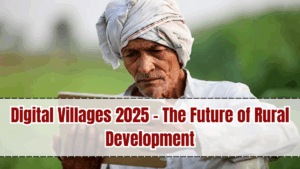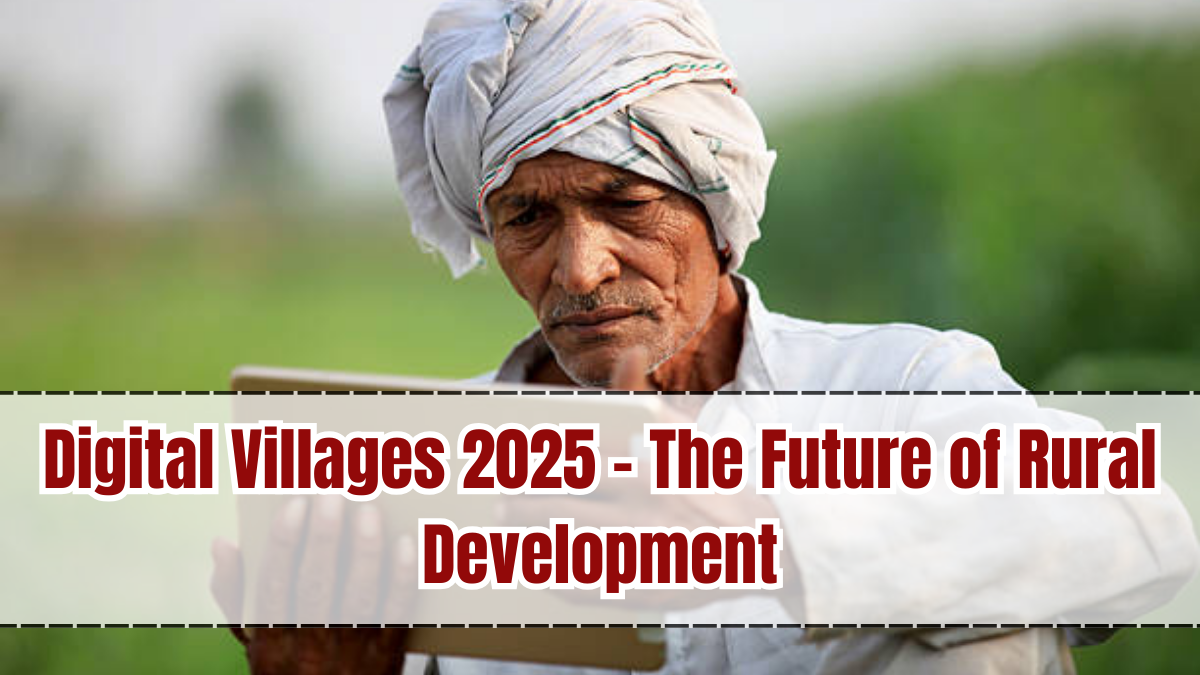Rural areas have long been seen as disconnected from the mainstream digital world, often struggling with poor access to education, healthcare, and essential government services. In 2025, Digital Villages are changing this perception by creating connected ecosystems where technology empowers every citizen. Through e-governance, smart infrastructure, and digital literacy programs, rural communities are experiencing opportunities that were once exclusive to urban centers. This transformation is not only uplifting villages but also driving inclusive national growth.

Table of Contents
What are Digital Villages?

A Digital Village is a rural area equipped with internet connectivity, smart infrastructure, and digital platforms that enable citizens to access government services, financial tools, healthcare, and education online. Instead of depending on physical visits to distant towns, villagers can now apply for ration cards, access telemedicine consultations, attend online classes, and even manage banking through mobile apps. The idea is to ensure that technology becomes a bridge between rural aspirations and modern opportunities.
Importance of Digital Villages in 2025
The concept of Digital Villages 2025 is crucial for multiple reasons. First, they reduce the gap between urban and rural living standards by offering equal access to services. Second, they improve efficiency in governance by eliminating paperwork and reducing corruption. Most importantly, digital villages help in building stronger local economies by supporting entrepreneurship, e-commerce, and digital payments. At a time when rural youth are increasingly tech-savvy, these villages provide a platform for innovation and progress without forcing migration to cities.
Key Benefits
The benefits of digital villages extend across social, economic, and cultural dimensions. Farmers can now access real-time weather forecasts and online marketplaces to sell their produce at fair prices. Students in remote areas can participate in online classrooms and skill development programs. Women, often restricted by mobility, gain financial independence through online businesses and self-help group networks. Healthcare delivery also improves as telemedicine services connect patients to doctors instantly. Together, these factors make rural life more sustainable and dignified.
Role of Technology
Technology is at the heart of this transformation. High-speed internet connections ensure villagers stay connected to national platforms. Digital kiosks and mobile apps provide access to essential government services such as Aadhaar, pensions, and land records. AI-powered tools guide farmers in crop planning, while IoT devices manage irrigation and energy systems. Digital payment systems have eliminated cash dependency, making financial transactions secure and transparent. Over time, villages are expected to evolve into self-sustaining smart ecosystems where technology supports every aspect of daily life.
Government and Community Initiatives
Governments across the world are promoting digital villages as part of their rural development strategy. In India, initiatives under the Digital India Mission have already brought internet access, e-services, and skill hubs to thousands of villages. NGOs and private companies are also contributing by establishing digital literacy programs, funding internet infrastructure, and training women and youth in entrepreneurship. These partnerships ensure that the digital revolution is inclusive and reaches even the remotest parts of the country.
Future of Digital Villages
The future of Digital Villages lies in complete integration with smart governance and sustainable development. By 2030, most villages are expected to operate through fully digital systems where every household will have access to high-speed internet, smart electricity grids, and AI-driven advisory services. With blockchain-based record systems, land disputes and corruption will decline significantly. Ultimately, digital villages will redefine the image of rural areas from being underdeveloped to being centers of innovation and productivity.
Conclusion
Digital Villages 2025 symbolize the vision of inclusive growth where technology is not limited to urban elites but reaches every corner of society. By empowering farmers, students, women, and local entrepreneurs, these villages are creating equal opportunities for all. With the combined support of governments, communities, and technology providers, digital villages are not just improving rural life—they are shaping the future of entire nations. The journey towards a digitally connected rural world is no longer a dream; it is already a reality in 2025.
FAQs
What are Digital Villages 2025?
They are rural areas equipped with internet, digital services, and smart infrastructure that improve governance, education, healthcare, and financial access.
How do digital villages help farmers?
Farmers benefit from online marketplaces, weather forecasts, and digital advisory platforms that improve productivity and income.
What role does the government play in digital villages?
Governments provide internet infrastructure, e-services, and digital literacy programs while encouraging private partnerships to support rural communities.
Are digital villages sustainable?
Yes, they use smart energy, digital payments, and IoT tools to create self-sustaining systems that benefit both people and the environment.
What is the future of Digital Villages?
Future villages will be fully integrated with AI, blockchain, and smart governance, ensuring equal opportunities for rural and urban populations.
Click here to know more.






